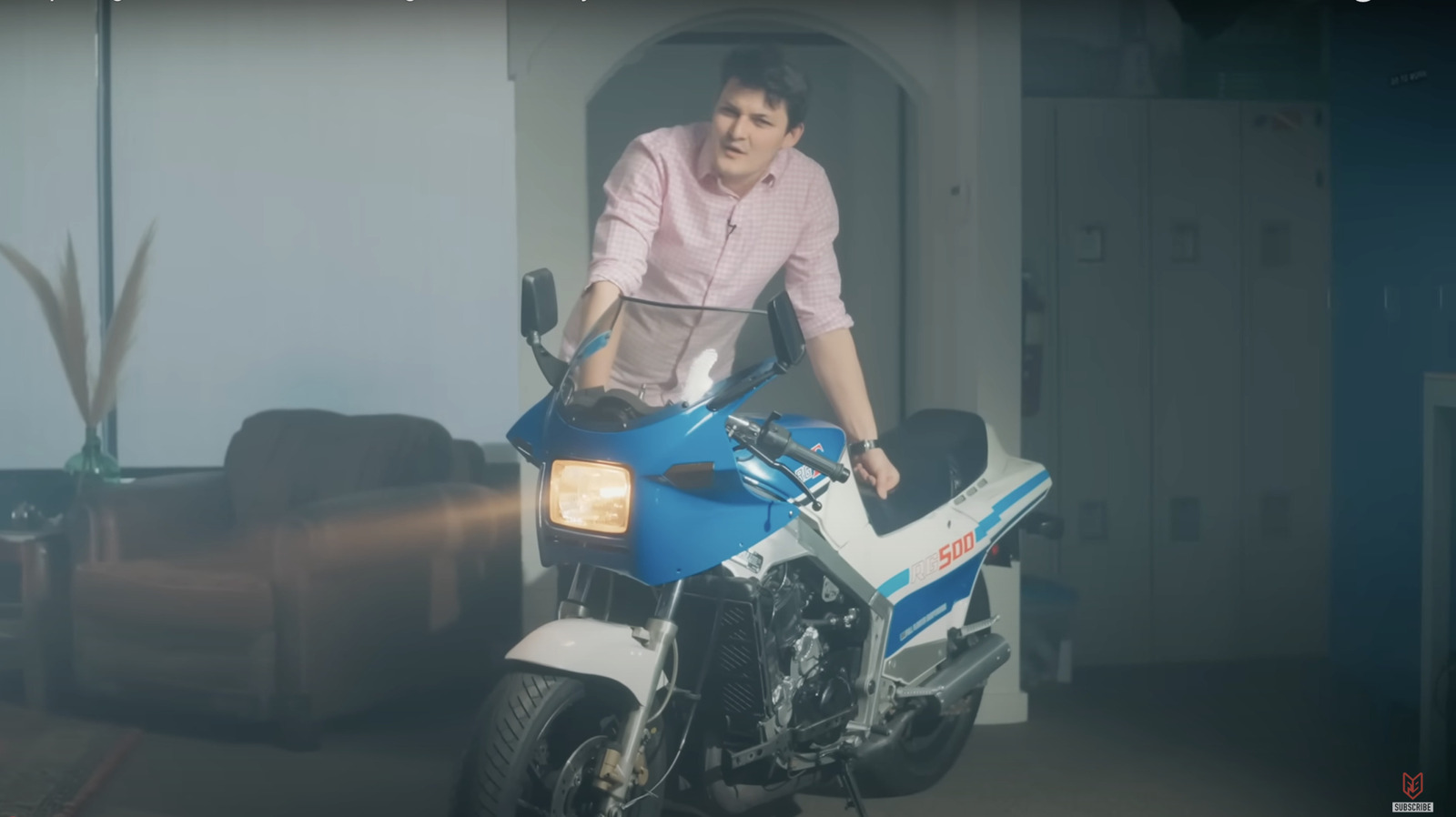Kids these days can’t drive stick, think they’re too good for an ice-cold Coors and don’t even know the first thing about solving all of their problems with karate. It’s ridiculous, just like the wispy little mustaches they grow. Back in my day, if someone told you that you could go out and buy an actual road-legal version of a MotoGP race bike, the response was, “Hell yeah, brother,” not, “Oh no, is it going to kill me?”
You’re not like those other kids these days, though. You could totally ride a Suzuki RG 500 without any problem. Sure, it was nicknamed the “Whispering Death,” and it’s arguably the most dangerous motorcycle to ever hit the streets, but who even decides that anyway? The same people who now say a pack of Marlboros a day will kill you and that cracking a cold one behind the wheel is wrong, now? Exactly. They hate America, and they hate fun, and clearly, that’s the only reason they spread all those nasty rumors about the RG 500. I mean, it has a 500cc engine. It’s basically a starter bike.
A literal race bike for the streets
As FortNine points out in the video above, the RG 500 was essentially as close to an actual MotoGP bike from the time as anyone could possibly sell. Suzuki had to add lights, turn signals, and quieter exhaust and a few other things to make it street legal, but if you ignore those things, the only real difference between the RG 500 you could buy at the dealer and the RG 500 racing on your TV were some fasteners that were made out of aluminum instead of titanium. As Makoto Suzuki said, “The engine was 100% identical. We just changed the name… You could buy a production RG 500 and win a GP, as Jack Middelburg did in 1981.”
And actually, as it turns out, even folks who rode the RG 500 at the time were a little afraid of it. Even Suzuki himself once claimed, “The engine was very hard to ride and peaky. The power was produced from 8,000 to 10,500 RPM — that was it. I rode the [RG 500] for half a lap in Japan and only once — that was enough for me… On the straight, I opened the throttle, the revs suddenly appeared, the bike wheelied, and I pulled in. It was a terrible moment.”
Then there was Frank Perris who said, “Most two-stroke riders rode with one or two fingers over the clutch lever, waiting for the seize. I always had four… You never got much warning. You’d probably get a tenth of a second. Sometimes you could catch it, but it was the times you couldn’t that were the big trouble.” Meanwhile, Barry Sheene said, “I was flat on the tank toward Stavelot doing like 180 odd into this long right-hander. She seized, and I had no f**king chance… I went between the barriers and between this row of parked cars and out the other side into Stavelot Village.”
The seize?
OK, so the engine seizing does sound a little scary, but surely, that was something that only happened if some idiot kid really messed something up, right? Not exactly. As Tommy Robb once explained, “The two strokes shattered my inner ears, but if you wanted to catch a seizure early, you needed to notice that slight tinkling noise just prior to a seizure, so I never wore cotton in my ears. Once you heard that pre-ignition noise, you knew the top of the piston crown was getting very, very hot, so the piston would start to swell, and that’s when you got your seizure.”
Yes, because of the way the RG 500’s two-stroke engine was built, before you got into the power band, it ran rich and didn’t make much power. Once it revved high enough, though, you got all the power at once, but if you kept revving it out, which it desperately wanted to do, it would run lean. In a two-stroke that relies on its fuel to lubricate the cylinder, running lean means more friction, more friction means more heat, and at a certain point, it would lock up. The “slight tinkling noise” Robb mentioned? When the piston got hot enough, fuel would start to combust on contact with it. Right before the engine seized, and you went flying.
That was also the “whispering death” that had everyone so concerned. It also wasn’t a problem if you just kept the engine in that narrow 2,500-rpm power band at all times. You could totally do that. You aren’t one of those snowflakes who needs a safe space like *checks notes* Frank Perris, Barry Sheene and Tommy Robb, right?
Just make sure you also don’t talk about the engine’s Nazi connection. We definitely don’t talk about the engine’s Nazi connection. (Don’t worry, the video absolutely talks about the Nazi connection.)




